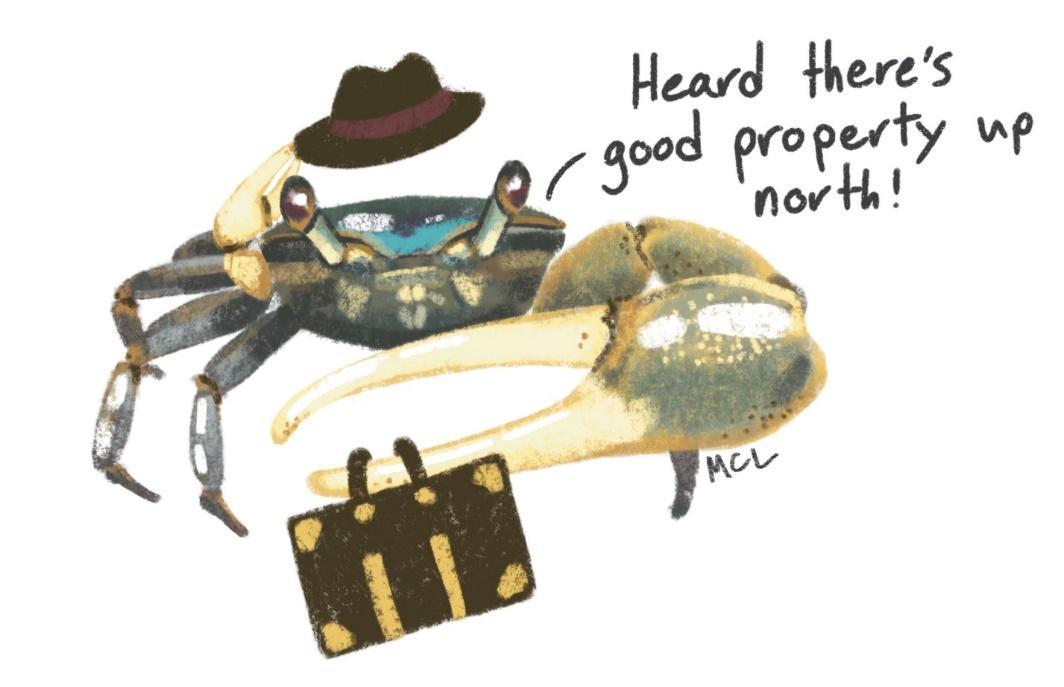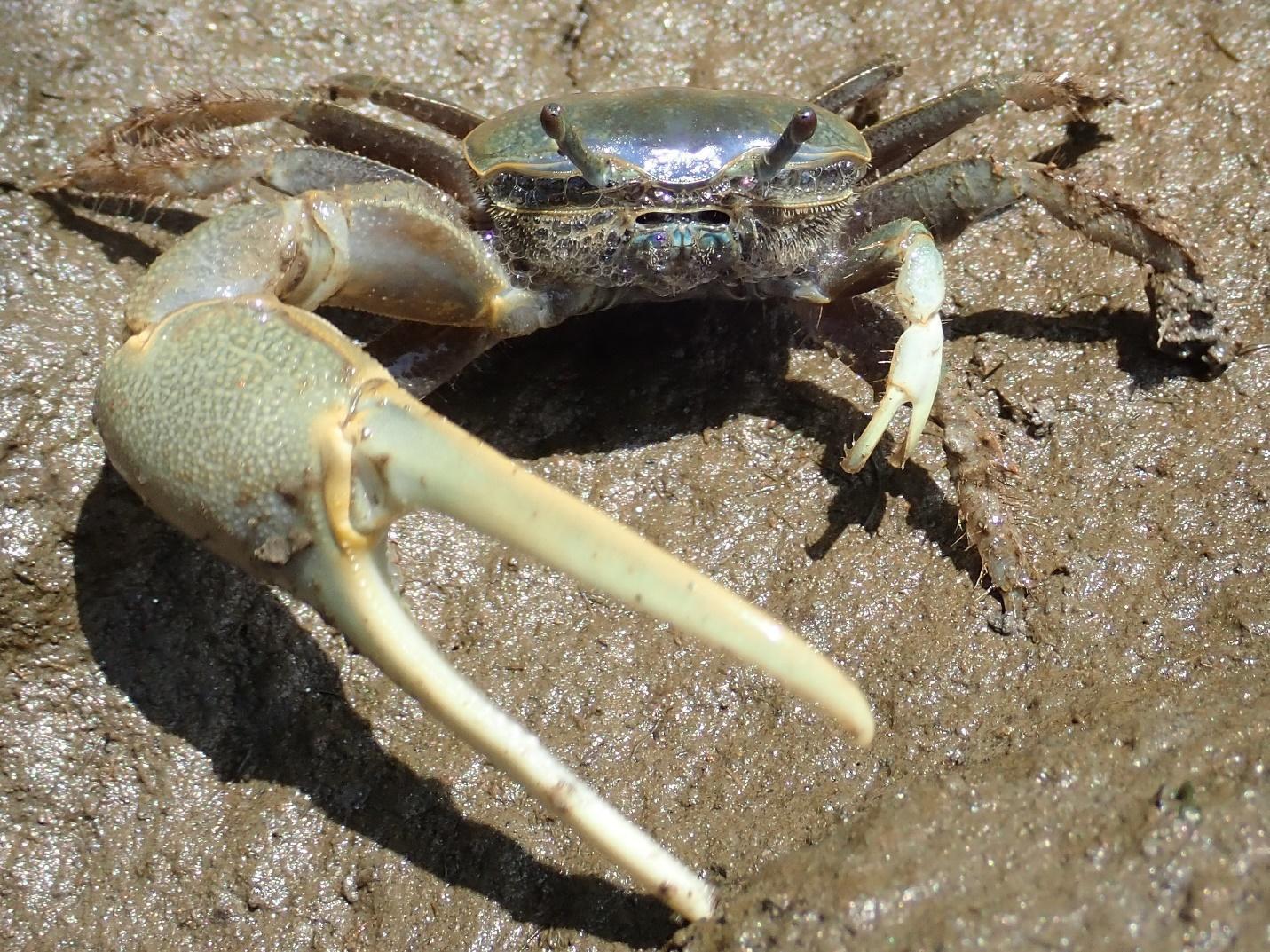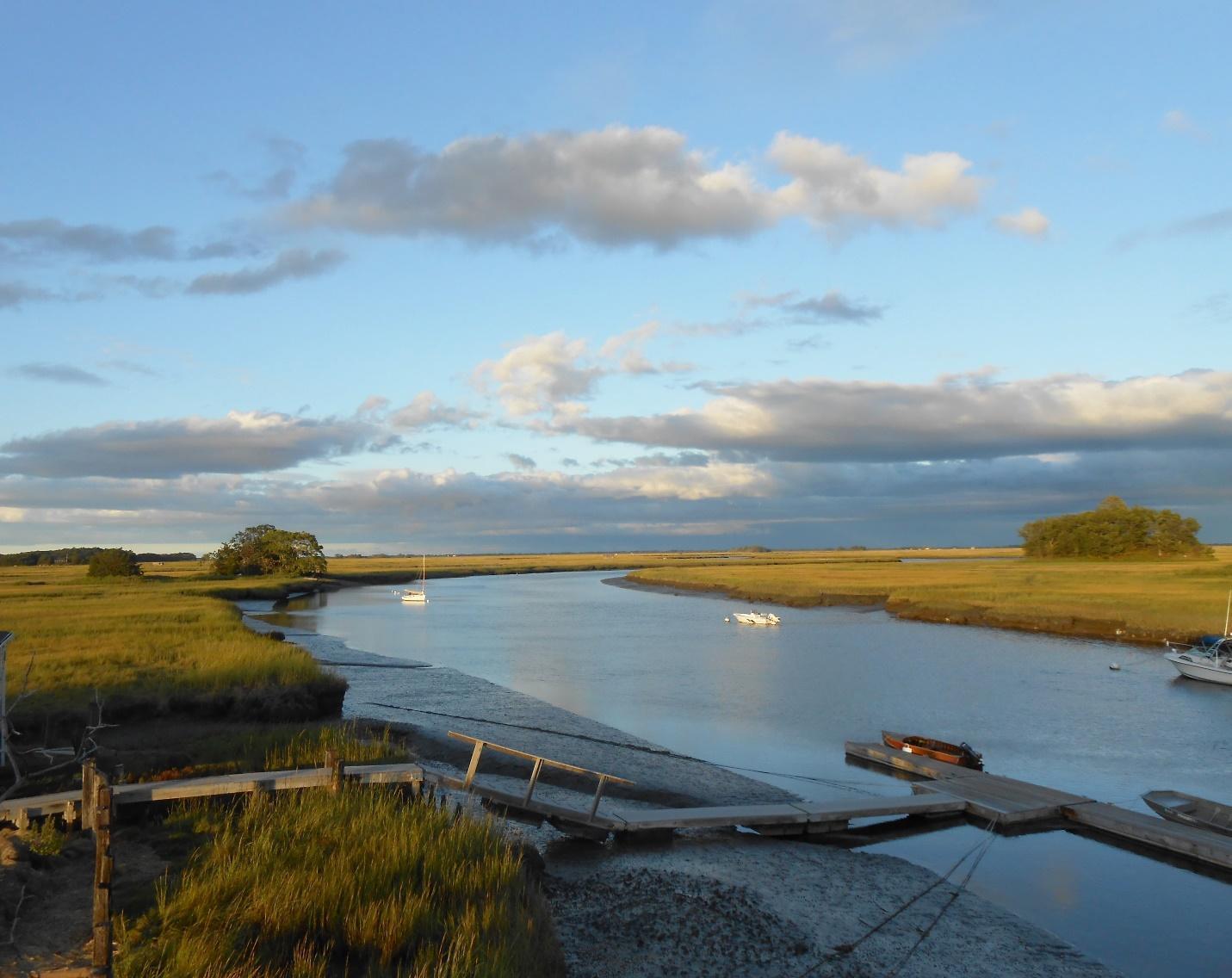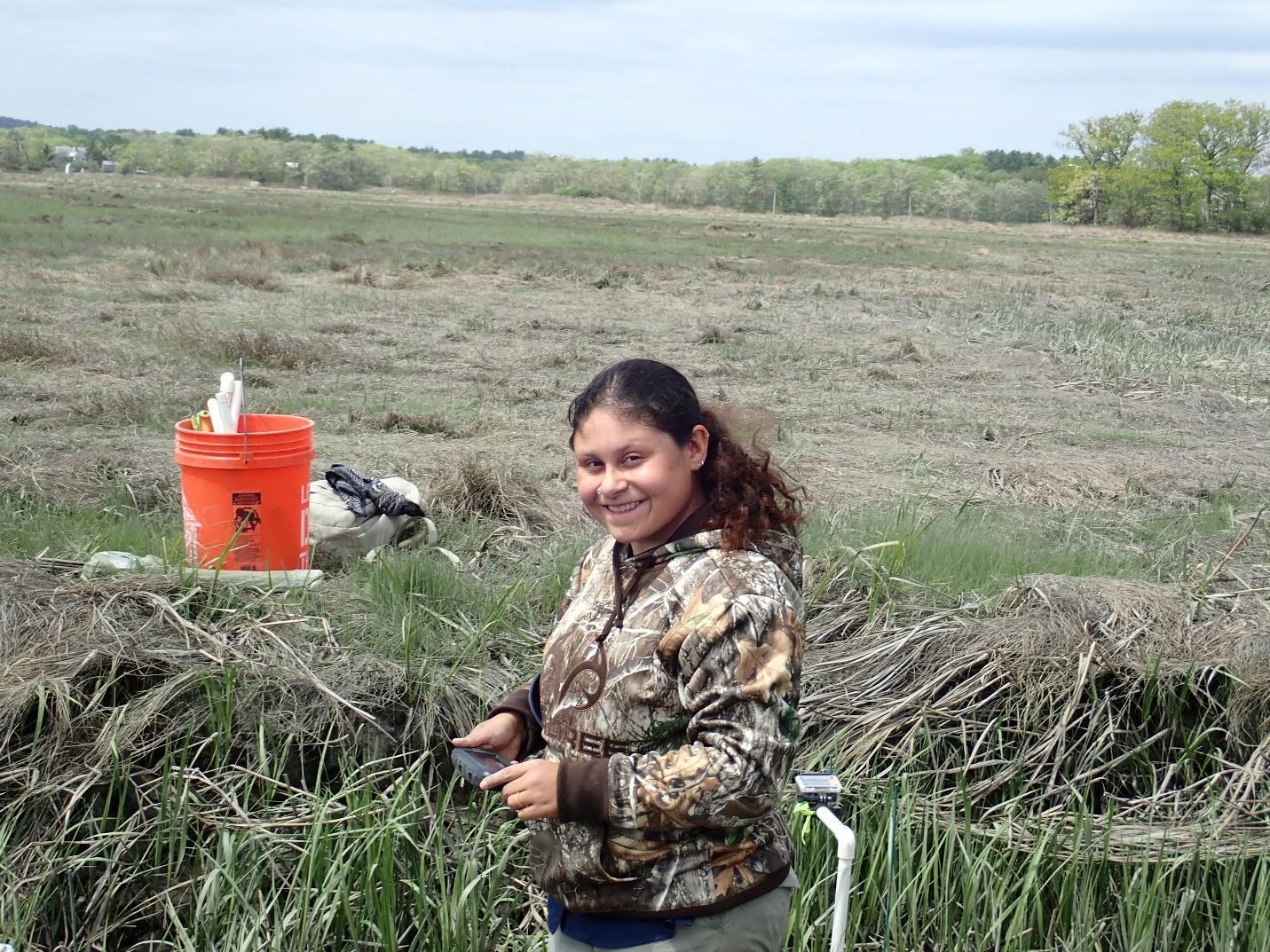Atlantic marsh fiddler crabs facilitate the aboveground growth of a foundational saltmarsh grass, but this positive interaction becomes negative as crabs migrate north.
by Mary Linabury, PhD candidate at Colorado State University and LTER Writing Fellow

Credit: Mary Linabury, used with permission.
Like other climate change migrants, Atlantic marsh fiddler crabs have expanded their range north into salt marshes that had not previously supported burrowing crabs
In 2014, Dr. David Johnson was walking within a muddy salt marsh an hour north of Boston at the Plum Island Ecosystem (PIE) LTER when an Atlantic marsh fiddler crab, Minuca pugnax, scuttled across his path (image 1). These crabs are common residents of intertidal salt marshes along the eastern US coast; however, this crab was living in a new zip code. Dr. Johnson’s encounter marked the first documented M. pugnax this far north.
Migration of M. pugnax may be particularly impactful to local ecosystems, given that these burrowing crabs are ecosystem engineers. Like earthworms in soil, fiddler crab burrowing aerates soils to increase root respiration and decomposition of soil organic matter while also enhancing nutrient availability through fecal inputs. Fiddler crabs form an important commensalism with Spartina alterniflora in their historic range, a grass that is essential to the foundation of saltmarsh ecosystems.
But whether fiddler crabs maintained the same commensalism with Spartina in their newly expanded range was unknown. In a new paper published in Ecology, graduate student Kayla Martinez-Soto and Dr. Johnson determine how the interaction between the Atlantic marsh fiddler crabs and Spartina grass changes at different latitudes. They find that the pattern flips as crabs migrate north: the commensalism that benefits Spartina in the crabs’ historic range changes to an inhibitory relationship in the north.

Credit: David Johnson, CC BY-SA 4.0.
Another migrant forces research to pivot
The LTER Network has three LTER sites with saltmarsh ecosystems at different latitudes on the U.S. East Coast. The Georgia Coastal Ecosystems (GCE) LTER on Sapelo Island and the Virginia Coast Reserve (VCR) LTER have well-established research programs that already study native populations of fiddler crabs. The PIE site is a similar saltmarsh estuary ecosystem but is a recent recipient of migrating crabs (image 2). Long-term monitoring makes these LTER sites ideal to capture migrating and adaptation in these focal species as they occur in real time.
The research team initially deployed “inclusion” cages that would prevent fiddler crabs from entering or leaving experimental plots at each site, allowing the team to manipulate crab density and understand the relationship to Spartina growth. However, the same day that inclusion cages were being established at the GCE LTER, COVID-19 was declared a worldwide pandemic. Those cages were meant to be resampled after three months, but weren’t recovered for two and a half years.
The proposed project was no longer feasible, so Kayla Martínez-Soto pivoted the experimental approach (image 3). Instead of comparing across three different sites, she realized that she could take advantage of natural variation in the crab populations within the PIE LTER. M. pugnax colonies are naturally “patchy” in their expanded range. This patchiness created a natural experiment that could be leveraged for a control-impact design: growth of Spartina in undisturbed areas could be compared to the Spartina in colonized patches to determine the impact of crab presence.
Kayla led a small, COVID-compliant team into the intertidal salt marshes to collect a season’s worth of data in just a few short days.

Credit: David Johnson, CC BY-SA 4.0.
Historic interactions don’t predict how climate migrants affect their expanded habitat
In the expanded range, Martínez-Soto and Dr. Johnson found that the presence of crabs was associated with a surprisingly strong decrease in Spartina biomass and stem density. That’s the opposite effect of M. pugnax on Spartina in their historic range, where crabs enhance aboveground biomass.
Where crabs were newly present, the aboveground productivity of Spartina was 40% lower and stem density was 30% lower compared to plots where no crabs were present. Both above- and belowground biomass decreased as burrow density rose.
These conflicting effects of M. pugnax on Spartina are likely determined by the history of local interaction between these species. Martínez-Soto and Dr. Johnson hypothesize that Spartina north of Cape Cod are not adapted to burrowing by crabs. Crabs in historical ranges produce an overall positive effect on Spartina growth, at the small cost of some belowground damage to roots. Northern Spartina that lack the evolutionary history with burrowing crabs may overcompensate for damage caused by belowground burrows by reallocating resources to root regeneration. This work demonstrates that the ecological role of climate migrants can change, and change substantially, once they expand their range.

Credit: David Johnson, CC BY-SA 4.0.
Long-term ecological research enabled crab migration to be documented and a new research program to be implemented
The population of M. pugnax in the expanded range has steadily increased since the first migrant appeared in 2014, and in the immediate future, this trend is expected to continue. Salt marshes are resilient ecosystems, but this research shows that Spartina biomass decreases in the presence of M. pugnax north of Cape Cod. Spartina at the PIE LTER will likely adapt to the crabs’ presence, but in the meantime, this negative interaction might result in salt marshes becoming more vulnerable to other concurrent effects of global change, such as sea level rise. Biomass production determines if tides will build or destroy the salt marsh habitat. If crabs reduce biomass, sediment capture is likely to decrease. During the coming period of crab migration and Spartina adaptation, it will be essential to monitor these habitats for any other forces that may influence the resilience of the salt marsh.Fortunately, as the PIE LTER site has permanent, long-term research infrastructure already in place, its scientists can continue to study how their ecosystem changes in response to their newest resident crabs.










